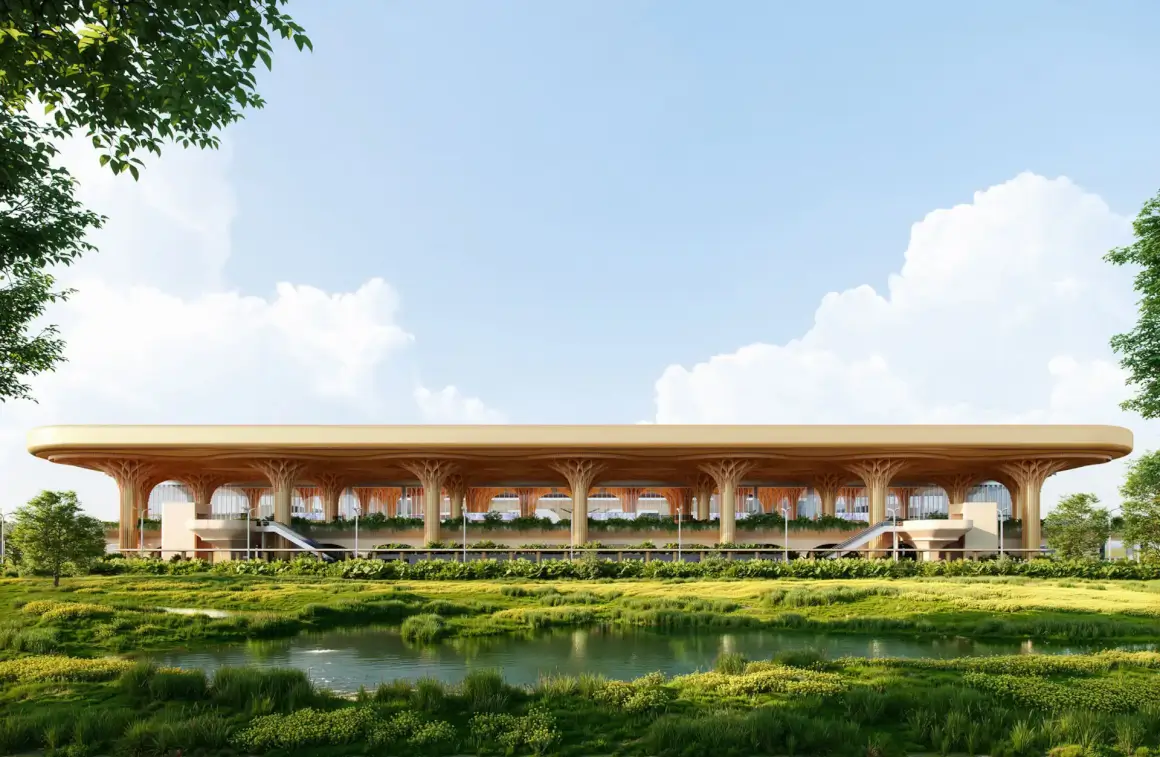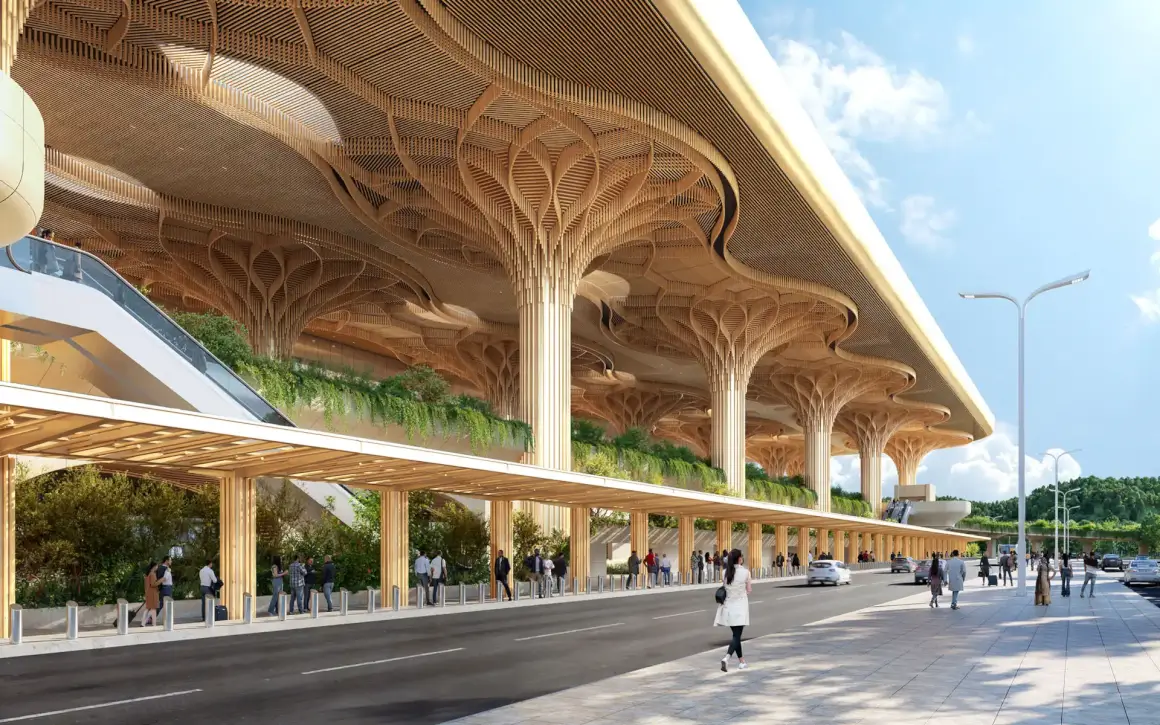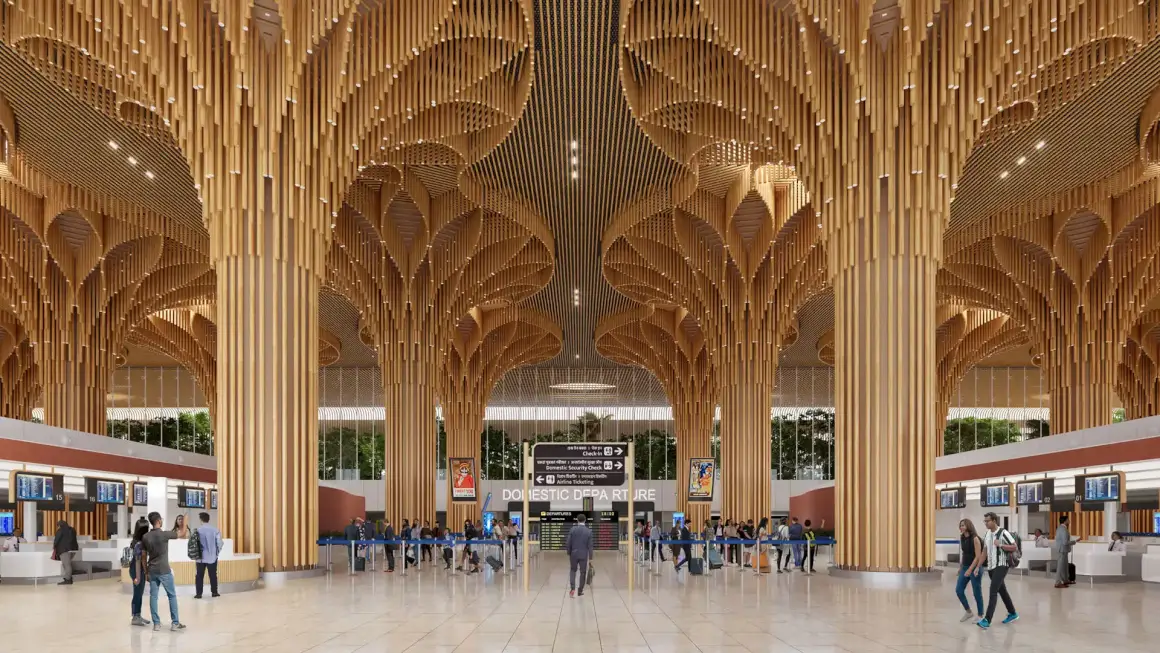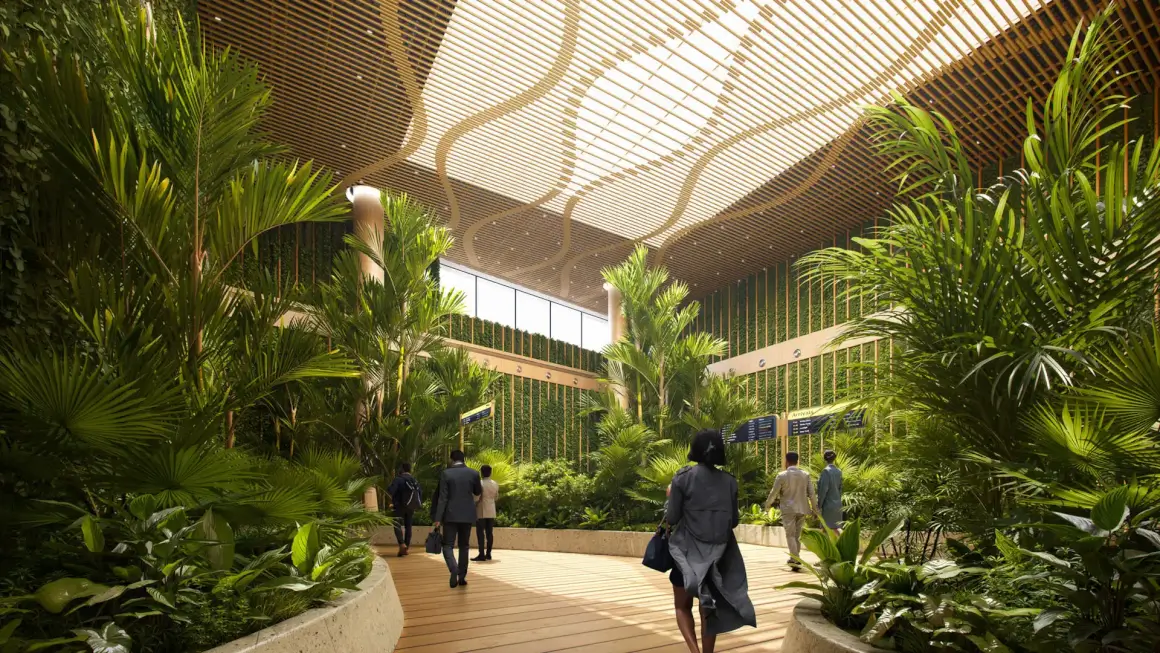
Nuru Karim, architect and founder of Nudes Architecture, merges architecture, art, and computational design with over 25 years of experience. Educated at McGill University, KRVIA, and the Architectural Association, London, he honed his skills working with Zaha Hadid Architects. Karim’s firm is known for innovative digital design and socially conscious projects, earning multiple critical acclaim and awards. He is one of the winners of the International Architecture Awards for 2025, for the Guwahati International Airport.


GDN: Can you please share some key qualities of your project?
Nuru Karim: We personally are very honored to receive this award. It is for an international airport in Guwahati, in the state of Assam. For us, airports are the first handshake. Airports can be cultural ambassadors. We were extremely inspired by the local context and the culture of the state of Assam and the seven sister states. It has led a lot of our research to orchids, about 67 % of the species of orchids you find in North East India. Inspired by the beauty of orchids in Brazil, we used a lot of engineered bamboo for this project as well. The whole idea is to enhance the passenger experience and make it memorable for people transiting through the Northeast, as this project is going to be its gateway.
GDN: Can you please share with us what sets your architectural film apart from others in terms of design philosophy?
Nuru Karim: Our work is at the intersection of public art, architecture, and urbanism, and we’re pretty inspired by nature. We believe in designers’ research, and I think it’s very significant that we listen, just as nature sort of listens. Whenever we enter a project, we’re very locked in it, in terms of looking at aspects and concepts, such as sustainability, the local culture, and the context. A lot of our work is driven by computational design as well, and especially mathematics in nature. That becomes a little bit important for us, but of course, the experience is in this case crucial too. Understanding the space program and redefining these elements together to create a moment, so the strong concept becomes essential.

GDN: How did receiving the award impact your professional approach?
Nuru Karim: As I stated before, it’s a great honor to receive this award and be in the hall of fame with other great projects and entries. It’s quite exciting to even see the other projects and learn from all the great work that the award has recognized. Nonetheless, it kept us humble, and we’re rooted in the ground. We’re still looking at this as a springboard to work more and devote more time and attention to future projects and ask the right questions. What we want is to just strive in the future and work towards that goal. But yes, we are greatly honored to receive the award.
GDN: How do you envision the future of architecture in relation to urban development and technology?
Nuru Karim: Great question, thank you for asking. I think it will be a very interesting stage. We are looking at the challenges of several cities. They include, among others, the climate crisis, population density, so our attention should be focused on tackling climate change or the elevation of poverty and improving health services. The whole goal moving forward is whether architecture can be a catalyst for social change and be instrumental in building resilience and creating a far more robust system, which could build resilience amongst people. And of course, learning from nature becomes very, very important too, because nature has survived for many, many, many years. So, I think that becomes an interesting lens for us to look at, perhaps one of the future aspects that we can look at and tackle.













